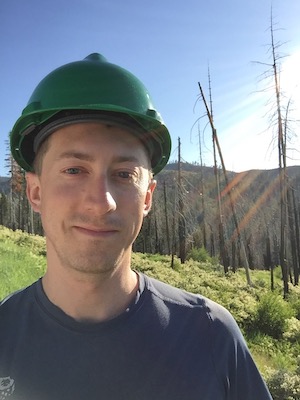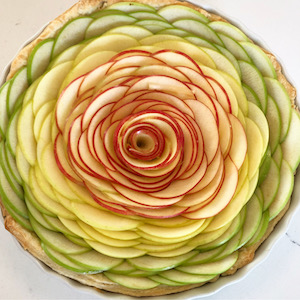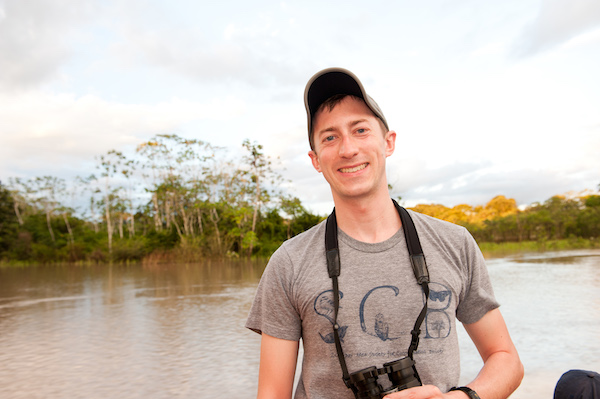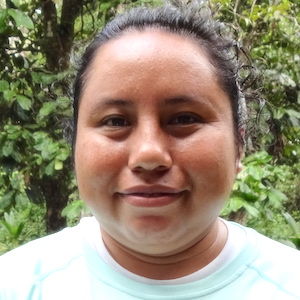After finishing his PhD at University of California Berkeley in 2011, Dr. Morgan Tingley worked with IBP as a post-doctoral researcher for a year. Nine years on and he's now a professor at UCLA, but he's still collaborating with IBP. We're thankful to have Morgan as a research associate, because he's both a fabulous scientist and a fabulous human.
1. Which interest came first, birds or science?
Birds! It’s unclear exactly how it started, but it goes back pretty far. I liked to draw and color a lot as a child, and as far back as I can remember, birds were my number one artistic interest. I wasn’t exceptionally talented, but at 4 years old, I spent a ton of time drawing Robins, bluebirds, and Scarlet Tanagers (same shape, different color patterns). There were no birdwatchers in my family, so although I loved birds, I didn’t realize that I could actually go out and see them. I didn’t start birding until the end of high school, by which point I was also very interested in science and math, and so it wasn’t long after that I started doing science on birds.
2. Why did you choose to do a post-doc with IBP?

Morgan at work studying Black-backed Woodpeckers in the Sierra.
The opportunity with IBP was too good to pass up. I was finishing my PhD at UC-Berkeley and starting to look at postdoctoral opportunities when I saw an advertisement online for a 1-year postdoc working on Black-backed Woodpeckers in post-fire landscapes of California. I had always loved this species, and was already working in the Sierra Nevada, so it was a good match. I had also previously met several IBP scientists and was excited to work with such a strong group of researchers. Finally, I was also looking for a position that would allow me to telecommute, and IBP was happy to provide me with the flexibility I needed.
3. Why do you continue to collaborate with IBP scientists?
Despite the fact that my postdoc was only 1 year, I fell in love (intellectually) with post-fire forests as a study system, and I truly enjoyed the collaborative, team-based approach that IBP takes to research. There is a great sense of shared values and goals within IBP that – independent of research – keeps me coming back for more.
4. Do you have a favorite bird? If so, what species and why?
I always think this question is like asking a conductor to claim their favorite piece of music – there are too many wonderful birds that are awesome in different ways! But if you made me choose, I have long considered Resplendent Quetzals to be one of the world’s best birds. But I also really like frogmouths, owls, penguins, hummingbirds, albatross, and – of course – woodpeckers.
5. If you couldn't be a scientist, what career would you choose?
Does working in conservation count, or is that too similar? After college I quite enjoyed being an environmental consultant. And I almost became an environmental lawyer. In grad school, I considered dropping out and being a bird tour leader, or an engineer at Google. But I’m really, really happy to be a scientist!

One of Morgan's creations: an apple tart about to go in the oven.
7. Any hobbies?
I love baking desserts.
8. What research projects are you working on now?
We’re working on a wide variety of projects in my lab right now: studying the impacts of climate change on the timing of migratory bird spring arrival and breeding; long-term changes in bird size and shape; the future of avian diversity in flammable western forests; and lots of other exciting topics. Stay tuned!






